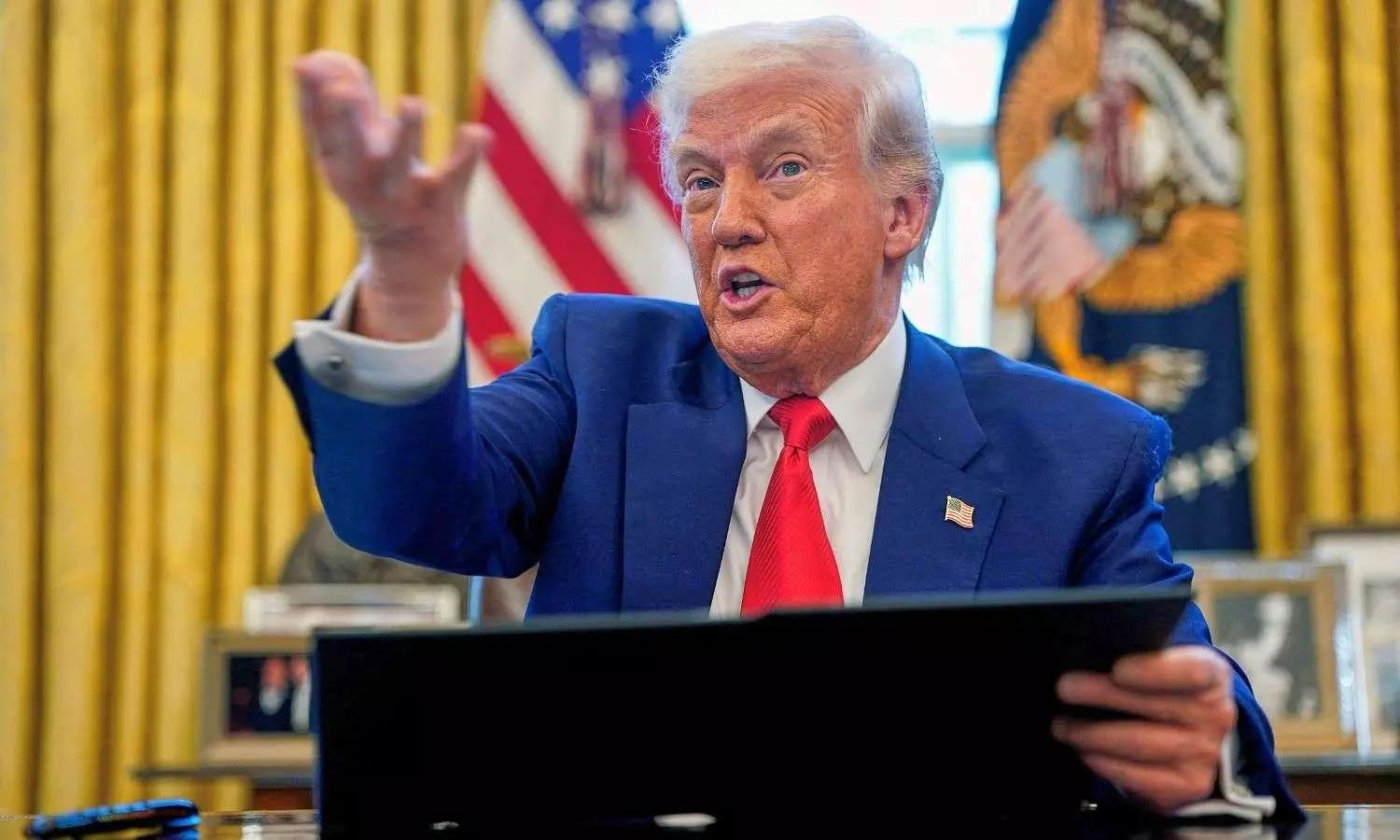
‘Movie industry dying fast death’: Trump orders 100 pc tariff on foreign-made films
US president says incentives offered by other countries to draw filmmakers and studios away from the US are costing the local movie industry dearly

In a new salvo in his tariff war, US President Donald Trump has now announced that his administration will impose a 100 per cent tariff on movies produced in foreign countries.
In a post on Sunday (May 4) night on his Truth Social platform, Trump said he has authorised the Department of Commerce and the Office of the US Trade Representative to slap a 100 per cent tariff “on any and all Movies coming into our Country that are produced in Foreign Lands.”
“The Movie Industry in America is DYING a very fast death," he wrote, complaining that other countries “are offering all sorts of incentives to draw" filmmakers and studios away from the US.
Also read: Vance says trade deal soon with India, calls Modi 'tough negotiator'
"This is a concerted effort by other Nations and, therefore, a National Security threat. It is, in addition to everything else, messaging and propaganda!”
Why filmmakers choose foreign locales
It wasn't immediately clear how any such tariff on international productions could be implemented. It's common for both large and smaller films to include production both in the US and other countries. Big-budget movies like the upcoming Mission: Impossible – The Final Reckoning, for instance, are shot around the world.
Incentive programmes for years have influenced where movies are shot, increasingly driving film production out of California and to other states and countries with favourable tax incentives, like Canada and the United Kingdom.
Yet tariffs are designed to lead consumers toward American products. And in movie theaters, American-produced movies overwhelming dominate the domestic marketplace.
China has ramped up its domestic movie production, culminating in the animated blockbuster Ne Zha 2 grossing more than USD2 billion this year. But even then, its sales came almost entirely from mainland China. In North America, in earned just USD20.9 million.
The Motion Picture Association (MPA) didn't immediately respond to messages Sunday evening.
Also read: Tariff talks with India going great, I think we will strike a trade deal: Trump
The MPA's data shows how much Hollywood exports have dominated cinemas. According to the MPA, the American movies produced USD22.6 billion in exports and USD15.3 billion in trade surplus in 2023.
‘Better, bigger, stronger Hollywood’
Trump has made good on the “tariff man" label he gave himself years ago, slapping new taxes on goods made in countries around the globe. That includes a 145 per cent tariff on Chinese goods and a 10 per cent baseline tariff on goods from other countries, with even higher levies threatened.
By unilaterally imposing tariffs, Trump has exerted extraordinary influence over the flow of commerce, creating political risks and pulling the market in different directions. There are tariffs on autos, steel and aluminium, with more imports, including pharmaceutical drugs, set to be subject to new tariffs in the weeks ahead.
Trump has long voiced concern about movie production moving overseas.
Also read: IMF on Trump's tariffs: US, global economic outlooks have worsened
Shortly before he took office, he announced that he had tapped actors Mel Gibson, Jon Voight and Sylvester Stallone to serve as “special ambassadors" to Hollywood to bring it "BACK—BIGGER, BETTER, AND STRONGER THAN EVER BEFORE!” US film and television production has been hampered in recent years, with setbacks from the COVID-19 pandemic, the Hollywood guild strikes of 2023 and the recent wildfires in the Los Angeles area. Overall production in the US was down 26 per cent last year compared with 2021, according to data from ProdPro, which tracks production.
US locales not lucrative
The group's annual survey of executives, which asked about preferred filming locations, found no location in the US made the top five, according to the Hollywood Reporter. Toronto, the UK, Vancouver, Central Europe and Australia came out on top, with California placing sixth, Georgia seventh, New Jersey eighth and New York ninth.
The problem is especially acute in California. In the greater Los Angeles area, production last year was down 5.6 per cent from 2023 according to FilmLA, second only to 2020, during the peak of the pandemic. Last, October, Gov. Gavin Newsom proposed expanding California's Film and Television Tax Credit program to USD750 million annually, up from USD330 million.
Also read: Nations seeking trade deals with US at Beijing’s expense will face countermeasures: China
Other US cities like Atlanta, New York, Chicago and San Francisco have also used aggressive tax incentives to lure film and TV productions. Those programmes can take the form of cash grants, as in Texas, or tax credits, which Georgia and New Mexico offer.
“Other nations have been stealing the movie-making capabilities from the United States,” Trump told reporters at the White House on Sunday night after returning from a weekend in Florida. “If they're not willing to make a movie inside the United States we should have a tariff on movies that come in."
(With inputs from agencies)

